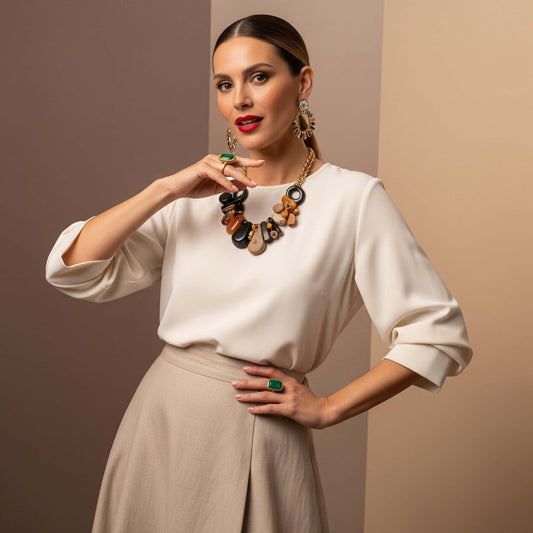
Eco-sustainable fashion and jewelry: rising trends for 2024
Introduction
In a world increasingly aware of the environmental and social impact of industries, eco-sustainable fashion and jewelry have experienced significant growth during the last half of 2023. Marking a milestone in the industry, these trends have captured the attention of consumers concerned about sustainability and ethics in the production of fashion items.
Growth and Evolution in Eco-sustainable Fashion
Over the course of the final half of 2023, fashion brands have stepped up their efforts to adopt more sustainable practices. From the use of organic materials to the implementation of environmentally friendly production techniques, eco-sustainable fashion has gained ground. A commitment to supply chain transparency and waste reduction has been a priority for many renowned companies.
The "upcycling" fashion trend has gained momentum, promoting the reuse and transformation of existing garments into new creations, thereby reducing the demand for natural resources and minimizing environmental impact.
Ethical and Responsible Jewelry: A Focus on 2024
In the jewelry industry, the search for ethical and sustainable materials has been a key theme. The interest in jewelry created with recycled metals, ethical gemstones, and low-impact production processes has led to a significant shift in the perception of traditional jewelry.
The use of techniques such as responsible mining and gem traceability has gained popularity, satisfying the demand of consumers concerned about the ethical origin of their jewelry. The preference for unique and personalized pieces has grown, prompting designers to use recycled materials and adopt more creative approaches to jewelry making.
Outlook for 2024
As we move into 2024, a continued increase in the adoption of sustainable practices in fashion and jewelry is anticipated. Brands are striving to innovate and collaborate with emerging technologies to develop new eco-friendly materials and further reduce their environmental footprint.
In fashion, further diversification is expected in the use of sustainable fabrics and innovative manufacturing processes that minimize waste. Furthermore, digitalization and 3D printing technology could revolutionize the way garments are designed and produced, allowing for more personalized and efficient production.
For jewelry, a continued focus on transparency and traceability of materials is anticipated, as well as a growing popularity of handmade and one-of-a-kind pieces. The integration of artificial intelligence into jewelry design could offer a more personalized experience for consumers while maintaining high ethical and sustainability standards.
Conclusion
In short, the future of eco-sustainable fashion and jewelry looks promising, as current trends point to a continued commitment to social and environmental responsibility. These industries are proving that it is possible to combine creativity, style, and ethics to offer attractive products that respect the planet and the communities involved in their production.



